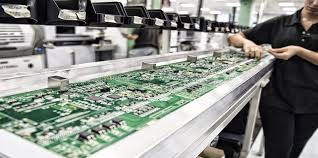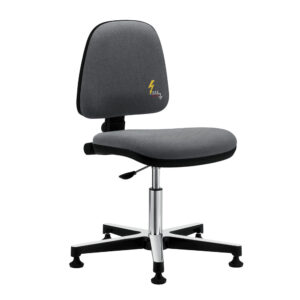Static electricity must be managed within the electronics industry laboratories as it
electronic components are sensitive to electrostatic discharge.
These can, in effect permanently damage or partially damage the electronic components.
Each type of electronic component has a susceptibility threshold and its susceptibility field is measured in volts.
In general, the greater the degree of integration of the component, the greater the sensitivity to electrostatic discharge.

Now we will see the elements that can generate electrostatic charges in a work environment
Among the elements that can generate electrostatic charges in an electronic industry laboratory we find:
1. the work surfaces and types are varied, just think of treated wood, synthetic mats, metal not connected to the ground, glass or fiberglass;
2. clothes such as clothing for clean environments, finger sleeves, gloves, wool, synthetic materials, shoes and boots;
3. chairs and stools, which are often made of fiberglass, vinyl, other plastic materials, ungrounded metal, treated wood.
4. Furthermore, floors covered with unsuitable vinyl or waxed carpets can generate electrostatic charges; packaging materials such as polyethylene bags, in plastic material for packaging with bubbles, foam, plastic balls for packaging, trays and plastic boxes.
5. Even the manufacturing processes contribute to the growth electrostatic discharge, the managers may be conveyors, transmission belts, machinery, nylon brushes to wash and clean, non-conductive liquids, air flows at high speed, temperature-controlled rooms or environmental ovens.
What should be done to eliminate the damage caused by static electricity?
To prevent the generation of charges it is necessary
– Create environments (departments) with controlled static electricity, that is: arrange suitable floors and use desks, ESD chairs, shelves, etc. made with dissipative antistatic materials.
– Always use protective containers for components, groups, etc.
– Ensure that the means of transport (belts, trolleys, etc.) do not generate static charges.
– Have personnel wear suitable protective clothing
– Raise awareness and educate staff on the problem and behavior to be followed in the departments.
When setting up an ESD laboratory or an EPA, the choice of suitable seats is not only a recommended action but indispensable. The ESD antistatic chair, in fact, is a dissipative vehicle of electrostatic charges and is essential and irreplaceable compared to all antistatic equipment in the development of an anti ESD system.
Gref antistatic seats play an essential and irreplaceable role with a dual function:
• They prevent the formation of electrostatic charges on the body of the seated person
• They guarantee the earth connection through the floor by discharging the static nature that may have accumulated on the person’s body.
Come and discover our line of Gref esd chairs and stools specifically designed to dissipate electrostatic charges.
Call us without obligation, we will help you step by step in choosing the antistatic chairs that meet your needs.

